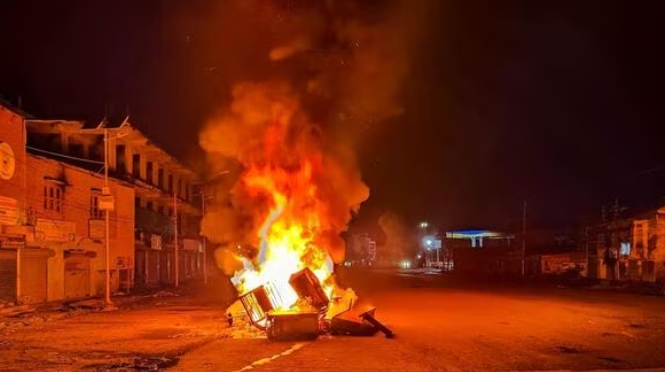A healing touch (GS Paper 4, Ethics)

Introduction:
- A year after it was jolted by ethnic violence, Manipur continues to be on the edge.
- The state has not seen large-scale violence in the last eight months.
- However, lives continue to be lost in clashes between Meiteis and Kuki-Zomis, falsifying the return of normalcy in Manipur.
The after-effects of Manipur violence
- The scars created by the conflict are admittedly deep – more than 200 people have lost their lives, families languish in refugee camps and there have been reports of gruesome violence against women.
- Vigilante groups continue to take the law into their hands.
- But great harm has also been done by the state government’s lack of will to initiate a meaningful dialogue between the warring communities.
Recent violence during Lok Sabha polling
- An incident took place two days after the conclusion of round two of the Lok Sabha polls.
- One person lost his life and two others were injured after residents of two adjoining villages waged a gun battle in the early hours of Sunday.
- A day earlier, two CRPF personnel were killed and two others sustained injuries following a blast at the paramilitary force’s outpost in Bishnupur district — one of the most brazen attacks on security forces in the past year.
- Violence against security forces has, in fact, been one of the recurring features of the conflict, highlighting that force alone cannot quell a situation that requires sensitivity and compassion in equal measure.
Efforts by the government to start a dialogue among communities
- After the first conflagration on May 3 last year, Union Home Minister Amit Shah announced the formation of a committee with representatives from different ethnicities, political parties and civil society, to begin the process of healing.
- That the committee ran into internal differences soon after does have much to do with the complexities of Manipur’s society.
- The situation is also made more fraught by landholding patterns and the continuing impact of colonial policies that segregated the state’s tribal-dominated hill areas from the Meitei-dominant Imphal Valley.
- But in the past year, CM Biren Singh’s government has done very little to assure communities, especially the hill tribes, that his administration is above the identity politics that has pushed the state to the brink.
- His regime has, instead, stoked tensions and aggravated faultlines with its incessant evocation of the insider-outsider trope.
The lacunas in the Manipur State government’s efforts to normalize the situation
- The Manipur government has done well to crack down on drug smugglers.
- But it continues to gloss over political and administrative failures by blaming the problem on illegal migrants from Myanmar with whom the Kuki-Zomis share a common ethnicity.
- In all this, measures to improve livelihoods in a state that has the third lowest per capita income in the country — it ranked the highest in the northeastern region in the 1990s — have taken a backseat.
- The healing touch Manipur requires must necessarily be a combination of economic, political and administrative measures.
- The Biren Singh government would be failing its mandate if it did not recognise this imperative, even after a year of strife in the state.
Conclusion:
- One year after Manipur violence, the state needs a combination of economic, political, and administrative remedies.
- A healing touch from the state to heal the scare of the ethnic violence and animosities among communities.


